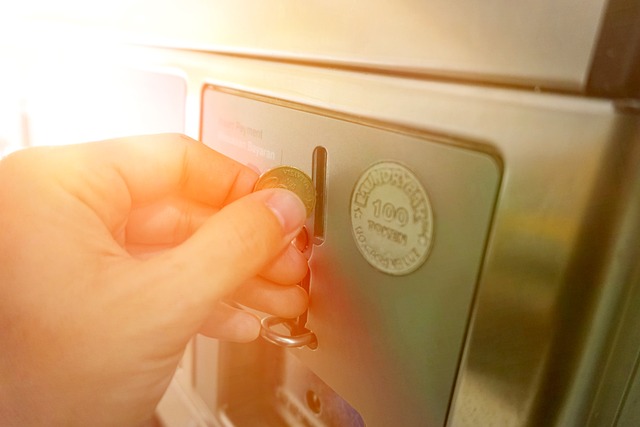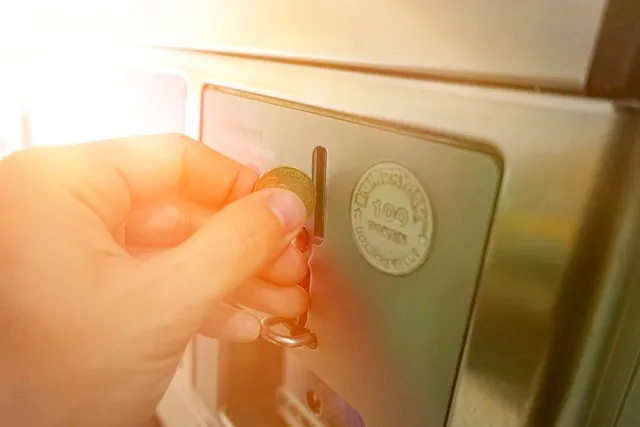What’s the Role of Consumer Education in Promoting Energy-Efficient Dryer Use?
Think of consumer education as the pit crew for your energy-efficient dryer. Just like a crew ensures a race car is fine-tuned for peak performance, consumer education helps you get the most out of your dryer while saving on energy. By learning how to use your dryer effectively, you can make smart choices that not only reduce energy consumption but also lower your utility bills.
Why does it matter so much? For starters, many people aren’t aware that simple adjustments can make a big difference. Did you know that cleaning the lint filter before every load can improve efficiency? Or that overloading your dryer can lead to longer drying times and more energy use? It’s like trying to fit a jumbo jet into a small hangar—things just won’t run smoothly.
Understanding energy ratings and the benefits of air-drying clothes or using dryer balls can also have a huge impact. It’s all about knowing your options and making informed decisions that align with both your needs and the environment.
When consumers are educated, they can easily navigate the maze of dryer settings and features, optimizing their usage. They learn to select the right drying cycle, understand the importance of proper maintenance, and utilize the dryer in ways that maximize efficiency. Essentially, consumer education turns the average user into a savvy energy-saver, transforming everyday laundry chores into a sustainable practice.
So, the next time you toss your clothes into the dryer, remember: being well-informed is like having a secret weapon for energy efficiency.
How Consumer Education Can Slash Your Energy Bills: The Case for Efficient Dryer Use

First off, let’s talk about efficiency. A well-maintained dryer isn’t just a luxury; it’s a game-changer for your wallet. Ever wondered why your dryer seems to be running forever? It might be due to a clogged lint filter or vent. When these are blocked, your dryer has to work overtime, burning extra energy. Keeping your lint filter clean is like giving your dryer a daily energy boost!
And what about those dryer sheets and fabric softeners? They might smell great, but they can actually create a film that reduces airflow and makes your dryer work harder. Opt for dryer balls instead—those little wonders are reusable, eco-friendly, and help separate your clothes, allowing for faster drying.
Here’s another trick: don’t overload your dryer. Picture this: your clothes are packed in like sardines. They’re going to need more time and energy to dry thoroughly. On the flip side, running smaller loads will help your dryer run more efficiently, cutting down on energy use and costs.
Also, consider air drying when you can. It’s like giving your dryer a day off! Hanging clothes to dry or using a drying rack can significantly cut down on energy consumption. Not only will your clothes last longer, but you’ll also notice a dip in your energy bill.
Incorporating these tips into your laundry routine can make a real difference. So, next time you toss your clothes into the dryer, think about how you can give your energy bills a break!
Unlocking Savings: Why Educating Consumers on Dryer Efficiency Matters
Here’s the deal: when we talk about dryer efficiency, we’re not just talking about the machine itself but how you use it. Think of it like this: if you’re driving a fuel-efficient car but keep hitting the gas pedal too hard, you’re not getting the mileage you expected. The same principle applies to your dryer. Understanding and practicing energy-efficient habits can drastically reduce your energy bills.
For starters, consider the size of your loads. Overloading your dryer is like cramming too many items into a suitcase—it just doesn’t work as well. Dryers need space to circulate hot air efficiently. On the flip side, drying too few items can waste energy, as the dryer has to heat up for a small load. It’s all about finding that sweet spot.
Another tip? Clean your lint filter regularly. This might seem minor, but a clogged filter is like trying to breathe through a straw—it restricts airflow and forces your dryer to work harder. By keeping the filter clean, you’re ensuring your dryer operates at its best and consumes less energy.
Don’t forget about your dryer’s settings. Using high heat settings for every load is like using a sledgehammer when a hammer will do. Many fabrics only need low to medium heat, and using the right setting can reduce drying time and energy use.
Educating yourself on these simple practices can transform your laundry routine and put more money back in your pocket. So next time you throw in a load, think about how these tweaks can make a big difference.
From Awareness to Action: The Impact of Consumer Education on Dryer Energy Efficiency
First off, let’s talk about something that often gets overlooked: dryer settings. Did you know that many people still use high heat settings for every load, even though lower settings work just as well for some fabrics? Knowing how to adjust these settings based on your laundry needs can lead to significant energy savings. It’s like switching from a gas-guzzling SUV to a fuel-efficient hybrid. Small adjustments can add up!
Consumer education also plays a huge role in understanding the importance of regular maintenance. For instance, cleaning your lint filter after every use isn’t just about avoiding a fire hazard—it also improves your dryer’s efficiency. It’s like giving your dryer a quick tune-up that keeps it running smoothly and less wastefully.
Moreover, when consumers are educated about the benefits of newer, energy-efficient models, they’re more likely to make the switch. Imagine upgrading from an old clunker to a sleek, high-tech vehicle that uses half the fuel. The immediate savings on your energy bills are impressive, and you’re also reducing your carbon footprint.
In short, taking the time to educate yourself about dryer usage and maintenance can have a profound impact. It’s all about transforming that everyday task into an opportunity for efficiency and savings.
Dryer Smarts: How Knowledge Translates to Energy Savings and Environmental Benefits
First off, let’s talk efficiency. Ever noticed that when you overload your dryer, clothes come out damp? It’s like trying to stuff a suitcase with too much stuff—it just doesn’t work. By drying smaller loads, you’re letting the dryer do its job more effectively, using less energy in the process.

Next, consider dryer settings. Modern dryers come with a range of options. Using the ‘auto-dry’ setting, which stops when clothes are just dry enough, rather than running on a timer, can prevent over-drying. Over-drying is like cooking food beyond its perfect point—it wastes energy and damages your clothes.
And speaking of settings, don’t overlook the dryer’s filter. A clean filter isn’t just about avoiding a fire hazard—it’s about optimal performance. A clogged filter makes your dryer work harder, which means it uses more energy. Think of it as giving your dryer a clear path to work efficiently.
Lastly, timing is key. Try to use your dryer during off-peak hours when energy costs are lower. It’s like shopping during a sale; you’re making the most of your resources.
Empowering Consumers: The Crucial Role of Education in Optimizing Dryer Efficiency
Think of your dryer as a high-tech marvel that needs a little guidance to operate at its best. It’s kind of like having a sports car—you wouldn’t expect it to perform optimally if you didn’t know how to drive it properly, right? Understanding how to use your dryer efficiently is just like learning how to handle that sports car to get the best performance.
First off, the importance of regular maintenance can’t be overstated. A clean lint filter might seem trivial, but it’s actually crucial for optimal dryer efficiency. It’s like giving your dryer a fresh pair of lungs every time you clean it. Clogged filters force your dryer to work harder, which not only increases your energy usage but can also shorten the lifespan of the appliance.
Also, did you know that overloading your dryer can lead to inefficiencies? Imagine trying to stuff a suitcase with twice as many clothes as it’s designed for. Your dryer struggles in the same way, leading to longer drying times and higher energy consumption. By educating yourself on the right load sizes and proper drying techniques, you ensure your dryer runs smoothly and efficiently.
Lastly, taking a few minutes to read your dryer’s manual might just save you a lot of hassle. Manufacturers often include tips and tricks that can enhance efficiency. So, just as you’d research how to get the most out of a new gadget, diving into the manual of your dryer can reveal ways to optimize its performance and help you get the most bang for your buck.
The Green Laundry Revolution: How Educated Consumers Are Changing Dryer Use
Picture this: a dryer that’s not just drying clothes but also reducing energy consumption and carbon footprints. Educated consumers are driving this change, pushing for appliances that are as green as they are efficient. They’re savvy about energy ratings, looking beyond flashy features to the real environmental impact. So, what’s behind this revolution?
First off, people are becoming more aware of the energy their appliances use. It’s like knowing the fuel efficiency of your car—just as you wouldn’t drive a gas guzzler, you wouldn’t want a dryer that saps energy. Modern dryers with high-efficiency ratings are becoming the norm, designed to use less electricity while still delivering perfectly dried clothes. These dryers often come with smart sensors that adjust the drying time based on moisture levels, preventing over-drying and saving energy.
Then there’s the growing trend of using alternative drying methods. Think of it as swapping your gas guzzler for an electric car. Consumers are embracing air-drying racks and energy-efficient dryers with heat pump technology, which recycle heat within the machine, using up to 50% less energy than traditional dryers.
Finally, there’s a community aspect to this revolution. Online forums and social media are buzzing with tips on reducing dryer use and sharing eco-friendly laundry practices. It’s like having a global support group for your green goals, where everyone’s in it together, swapping ideas and encouraging each other to adopt more sustainable habits.
In essence, educated consumers are transforming dryer use from a mundane chore into a pivotal part of an eco-friendly lifestyle.

